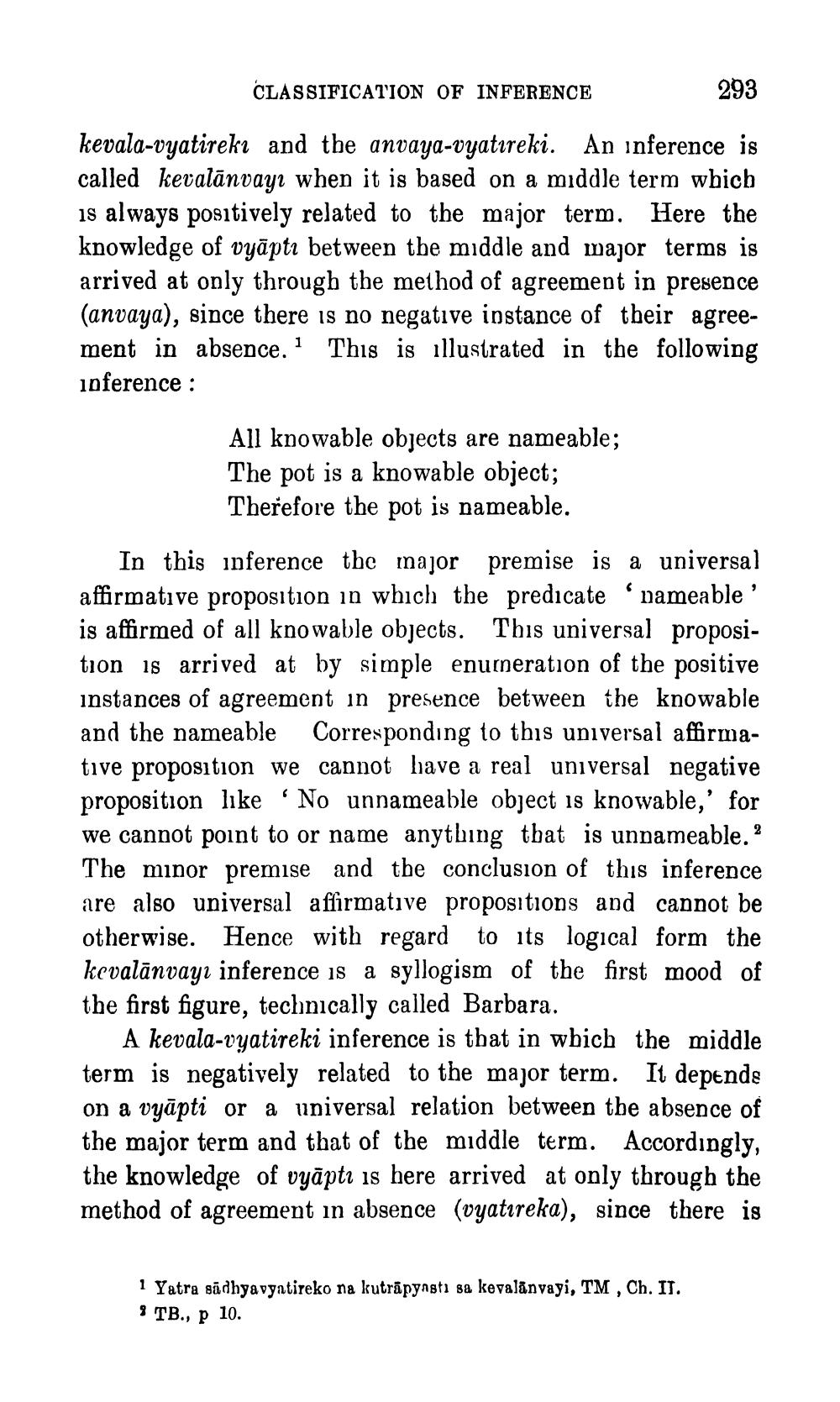________________
CLASSIFICATION OF INFERENCE
293
kevala-vyatireki and the anvaya-vyatıreki. An inference is called kevalānvayı when it is based on a middle term which is always positively related to the major term. Here the knowledge of vyāptı between the middle and major terms is arrived at only through the method of agreement in presence (anvaya), since there is no negative instance of their agreement in absence. This is illustrated in the following ipference :
All knowable objects are nameable; The pot is a knowable object; Therefore the pot is nameable.
In this inference the major premise is a universal affirmative proposition in which the predicate nameable is affirmed of all knowable objects. This universal proposition is arrived at by simple enumeration of the positive instances of agreement in presence between the knowable and the nameable Corresponding to this universal affirmative proposition we cannot have a real universal negative proposition like 'No unnameable object is knowable,' for we cannot point to or name anything that is unnameable. ? The minor premise and the conclusion of this inference are also universal affirmative propositions and cannot be otherwise. Hence with regard to its logical form the kevalānvayı inference is a syllogism of the first mood of the first figure, technically called Barbara.
A kevala-vyatireki inference is that in wbich the middle term is negatively related to the major term. It depende on a vyāpti or a universal relation between the absence of the major term and that of the middle term. Accordingly, the knowledge of vyāptı is here arrived at only through the method of agreement in absence (vyatıreka), since there is
1 Yatra sādhyavgatireko na kutrāpynsti sa kevalanvayi, TM , Ch. IT. 9 TB., p 10.




